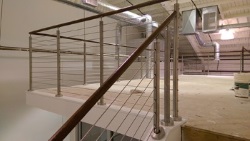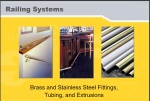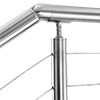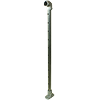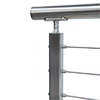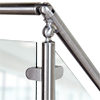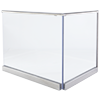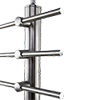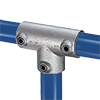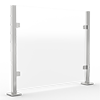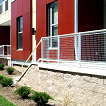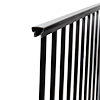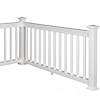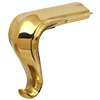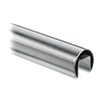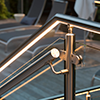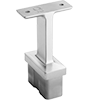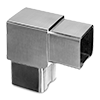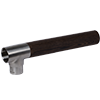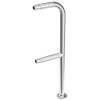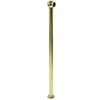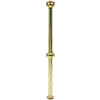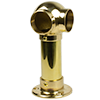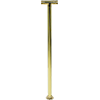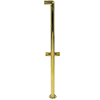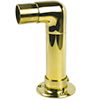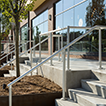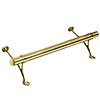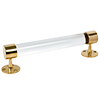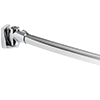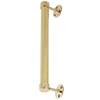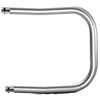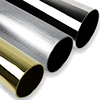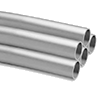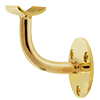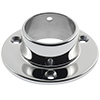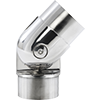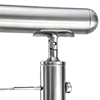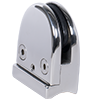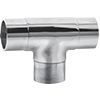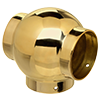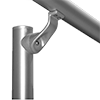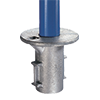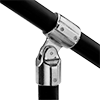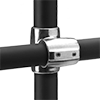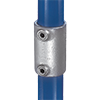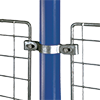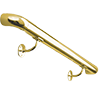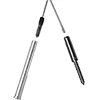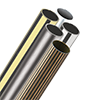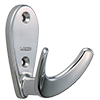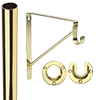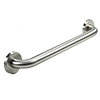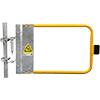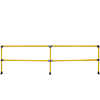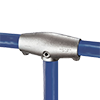Tips about how to Install Cable Railing
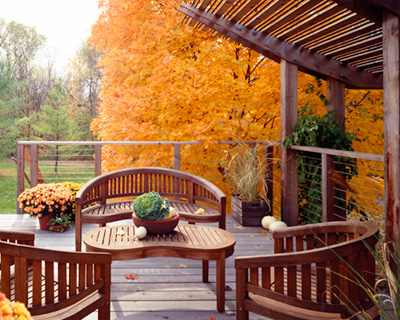 Wire deck railing can look great in a wide range of different areas. Installing it can be a fairly simple process and you won't need that many tools to do it.
Wire deck railing can look great in a wide range of different areas. Installing it can be a fairly simple process and you won't need that many tools to do it.
Here we'll take a look at how it can be done, what you need, and the code requirements around it.
Before you install a cable railing system, you need to have the frame in place.
Some cable railing kits come with prefabricated metal posts whereas others will choose to make their own wooden frame.
Meeting local height codes here is important and you’ll want to check them before you get started.
These height code requirements will be from ground level to the top of the pole so if you’re driving posts into the ground, bear this in mind.
Once you have the frame in place, then you can get started on the cable railing.
What you need to install cable railing
- Drill
- Twist drill bits
- Masonry bit
- Hammer
- Cable cutters
- Adjustable wrench
- Nut driver
Installing Cable Railing in Easy Way
There are a few different cable railing types but generally, they will all be installed in a similar way. Here we'll take a look at how to make cable railing. For the posts, there are numerous ways and materials used when it comes to how to build a cable deck railing. Many build their own wooden posts whereas others are happy to use a kit.
How to install cable railing
- Step 1 - To make life easier for yourself, it's best to make yourself a plywood template and measure your holes out accurately. The size and number of these holes will depend on what size cable for deck railing you’re using and how many cables you have.
- Step 2 – The next step is to drill the holes into the posts using the template that you have made up. It’s best to clamp this template onto the frame so that the holes are centered. If the corner post is wider than your template, then simply center it as much as possible.
- Step 3 – It’s time to install your cable fasteners and the way to install these will differ from one manufacturer to the next. Most fasteners will slide into the end post where the bare cable can be attached from the other side. Others may need to be screwed into masonry or the fence post.
- Step 4 – The easiest way to run through the cable is by fastening one end and running the whole wire through before fastening the other. If you want to know how to install cable railing on stairs then it’s best to use protective sleeves on the holes to prevent the wires from wearing away the materials.
- Step 5 – The way of how to tighten wire cable will depend on each model but to make the cable as tight as possible, it’s usually best to use vice grips or locking pliers to pull it through into the fastener and remove all the slack.
- Step 6 – While there are different fastener types, most of them will require you to cut any excess wire. If your fasteners protrude then you'll need to cut the wire right at the tip of the fastener and then attach the cable to the end connectors.
- Step 7 – Once you have the cables slid into the fasteners then you need to know how to tighten cable railing. You can tighten them with an adjustable wrench that will then remove any slack. Once you’ve used your wrench to secure the tightening nut then you should be done. Any excess cable tips can either be sawed or grinded to sit flush on the tightening nut, or you can fit end caps.
Cable Railing Specifications, Codes, and Compliance
Cable rail code compliance is vital as you don’t want your structure to be illegal but it’s fairly simple to follow. This cable railing code usually comes from either the International Residential Code (IRC) or from more local codes, such as city or state.
The cable railing spacing code includes requirements such as a 4” sphere shouldn’t be able to pass through any gap in the system. That is for horizontal cable railing code as for stairs, a 6" sphere rule is included for a 90-degree angle where the stair tread meets the riser.
There are also cable railing specifications relating the standard post sizes and the hole spacing that should be between them. The railings are also expected to hold 200lbs of concentrated force and you need to ensure proper post spacing. As always, it’s important to refer to your local codes to ensure that it is compliant.
Wire Deck Railing Ideas for your Inspiration
There are many cable deck railing ideas out there with one of the most popular being the use of dark wood against the brighter wire railing. You can also use lighter woods which can give decking a more tropical feel in those warmer climates.
The wire deck railing ideas don’t stop there as metal posts can also look stunning with the likes of white or black aluminum available. When trying to think of cable railing ideas, you shouldn’t be limited by just one color.
Some of the best ideas when installing cable deck railing comes from having different color handrails, posts and wire. It’s best to be creative and come up with a unique cable railing design that works for you.
How much does Cable Railing Installation Costs
Many factors go into the cost to install cable railing but you can generally expect a cable railing cost per linear foot of around $60. The true cable railing cost will, of course, depend on the materials used and the size of the structure.
If you wanted to reduce the cable deck railing cost then there are kits out there and you can do it yourself. This would also cut out any labor cost to install cable railing. The cable stair railing cost is also usually cheaper than other methods.
Whether you are looking at the cost of cable railing vs wood, or cable railing vs glass cost, the cable railing cost comparison usually comes out very well. If you’re interested in installing cable railing then you may be surprised at the low cost of what can be such an attractive railing solution.




